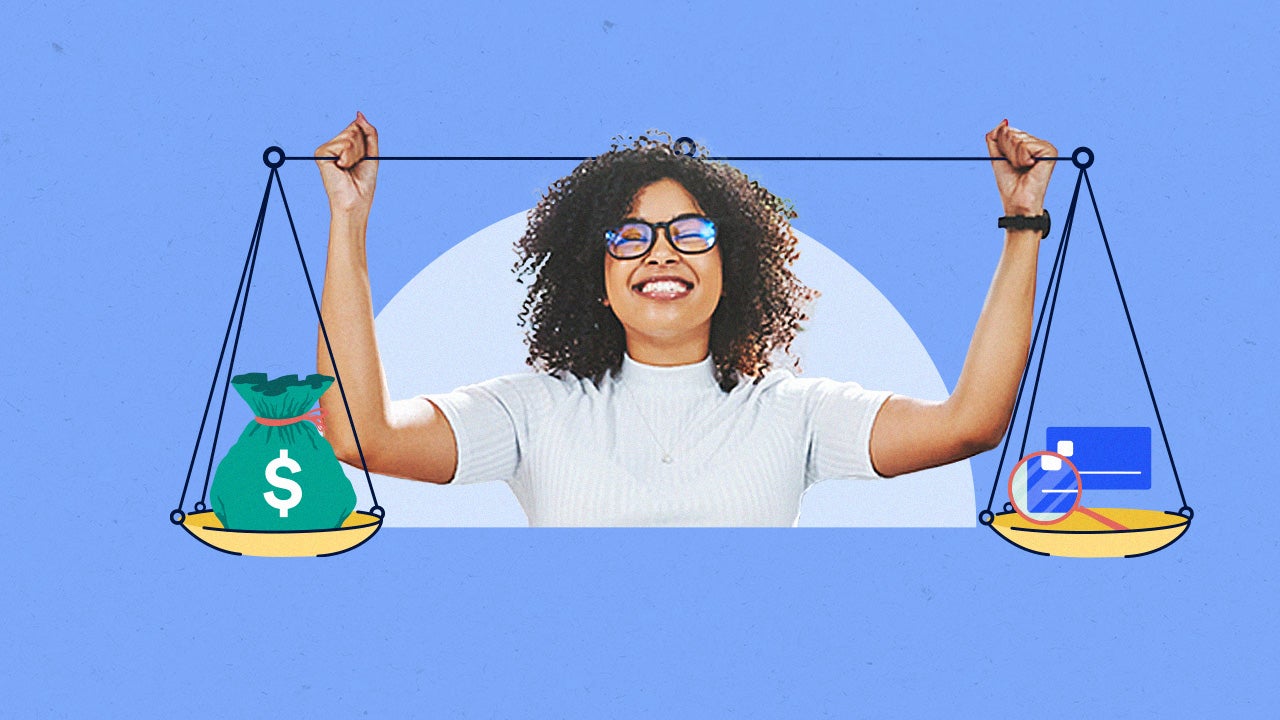How to get debt relief

Key takeaways
- Debt relief is a method of restructuring debt to make it easier for you to pay it back.
- You can get debt relief from lenders, debt relief companies and credit counseling agencies.
- The best debt relief strategy for your situation will depend on three main factors: the type of debt you have, your credit score and your financial situation.
If high debt balances are a source of stress for you, debt relief may be a potential solution. That said, debt relief can come from multiple sources, each catering to different types of debt, credit scores and overall finances. Understanding how they work is key to selecting the best one for your needs.
Debt relief options
Debt relief is available to borrowers who have exhausted all other options before bankruptcy. Although each method will differ, they all have the same end goal, which is to reduce — or eliminate — your existing debts.
Just like your debt, your relief option also has the potential to follow you well into the future. Whether it’s the steep fees, credit damage or asset elimination, each form of relief comes with its own set of risks.
When used in the appropriate setting, debt relief can save you thousands of dollars and may even eliminate your debt entirely. To best protect your future financial health and increase your odds of success, research each option thoroughly to make a holistic and informed decision.
Getting debt relief through a debt consolidation loan
If you’re struggling with unsecured debt, like credit cards, personal loans and medical bills, debt consolidation may be worth exploring.
When you take out a debt consolidation loan, you roll multiple debts into a single account. Depending on the lender, the new account will usually have a repayment term between one and seven years.
The best debt consolidation loans will have a lower average interest rate than your other accounts. Because of this, you may be able to save more money — provided you don’t take on more debt after.
Consolidation also may be ideal for those who are overwhelmed by communication from their creditors. And while it isn’t always the case, some lenders that focus on debt consolidation will pay your accounts on your behalf, saving you the extra work.
Getting debt relief through a balance transfer card
Just like debt consolidation loans, balance transfer credit cards allow you to combine multiple debts into a single account. However, balance transfer credit cards only allow you to consolidate credit card debt, and you’ll need good-to-excellent credit to qualify for the 0 percent annual percentage rate (APR) introductory offer.
If you’re approved for a balance transfer credit card, the issuer will ask you to list the credit account numbers you wish to pay off, then send the money directly to them. Depending on the issuer’s introductory offer, you could have anywhere from six to 21 months to pay your balance in full, without interest.
The big caveat is that interest will start accruing if you fail to pay off your balance in full by the time the 0 percent APR introductory offer expires. Oftentimes, this rate is much higher than you’d get with a loan. Depending on your debt load, this could cause the debt cycle to continue, especially considering that the average credit card holds a rate of 20.93 percent.
Getting debt relief through debt settlement
If you have over $7,500 worth of unsecured debt and your credit is in bad shape, then seeking a program through a good debt relief company may be your best option.
With a debt relief company, you can typically pay off your balances in under five years. While it can provide relief over time, it may have a negative impact on your credit score.
Most companies ask you to stop payments to creditors — it can make negotiation easier, but missed payments will be reported. Creditors are also under no legal obligation to work with you or your settlement company, so you’re incurring significant credit risk by temporarily halting your payments during the negotiation period.
Additionally, most companies will charge a fee of up to 25 percent of the total amount of debts settled. You will also be required to pay account maintenance fees if your debts get settled for a smaller amount. But if a company requires a fee upfront, this is a sure-fire sign of a scam.
Debt relief companies, also referred to as debt settlement companies, work with your creditors to negotiate better terms for your credit accounts in exchange for a fee.
Getting debt relief through a debt management plan
With a debt management plan, a credit counselor will evaluate your credit report, current debts and income to create a plan to tackle your debts in three to five years.
Just like debt relief companies, credit counseling agencies work with your creditors to negotiate a lower payment on your behalf. You’ll typically be charged a setup fee and a monthly fee for these services.
Working with a credit counseling agency can help you create tools to develop healthier money management skills. Likewise, credit counseling agencies don’t have a minimum credit score requirement to work with you, making them much more accessible than other debt relief options.
Although debt management plans are offered by both for-profit and nonprofit credit counseling agencies, it’s always best to go with the latter, if possible.
How to approach debt relief
There are multiple ways to go about debt relief. Follow these steps to find the right option for your needs.
1. Take inventory of your accounts and balances
To choose the best form of debt relief, you need to know the types of debt you have — credit card debt, personal loan, medical bills — how much you owe on each account, your current interest rates and your current monthly payments.
Many lenders, as well as debt relief companies and credit counseling agencies, have a minimum debt requirement for you to apply for relief. Additionally, knowing how much you owe will allow you to choose a debt relief plan that makes sense for your budget and help you set realistic goals.
2. Check your credit
Although debt relief companies and credit counseling agencies typically don’t have a minimum credit score requirement for you to apply, lenders do. Each lender has its own credit score criteria, but you’ll typically need a score of at least 600 to qualify for a debt consolidation loan and a score of 700 and up to secure the lowest interest rates.
Many banks, credit unions and credit card companies offer free credit reports and scores as part of their services. You can also get a free copy of your credit report on a weekly basis from all three major credit bureaus — Equifax, Experian and TransUnion — by visiting AnnualCreditReport.com. Although full credit reports from the bureaus won’t show your credit score, you’ll get an understanding of where you stand with creditors and what accounts need the most attention.
3. Choose your approach
There are three main approaches to debt relief: DIYing a debt management plan, using a debt relief company or enlisting the help of a credit counselor.
DIY debt relief
- Debt consolidation is a common debt management method for those who don’t need to consult a credit counselor for assistance. This is best suited for borrowers who have a good credit score and can score a low interest rate, regardless of whether they choose a consolidation loan or a credit card.
Debt relief company
- Debt relief companies are agencies that use a combination of tools, including counseling and debt settlement services, to help you get out of debt faster in exchange for a fee. Many require you to have at least $7,500 worth of unsecured debt to work with you. Additionally, your credit score will suffer, as you’ll typically be required to be behind on payments to be eligible for relief.
Credit counseling agency
- Although some credit counseling agencies charge a fee in exchange for their services, these are often much lower than that of debt relief companies. Credit counseling agencies can help you get out of debt through a debt management plan and provide you with the necessary tools to understand how to better manage your finances in the future.
4. Gather your required documents
Once you’ve decided on a debt relief strategy, you will need to gather all of the necessary documentation. Although the information you need may vary depending on the strategy you choose, you’ll typically be asked for:
- Full name and contact information.
- Physical address.
- Your Social Security number or individual taxpayer identification number.
- A copy of the most recent statement of the debts you want to restructure.
- Proof of income, such as tax returns, pay stubs and other legal documents.
These documents will help the lender, debt relief company or credit counseling agency understand your full financial picture and determine your eligibility for debt relief, as well as your options.
Debt relief options to avoid
While some debt relief options can be beneficial, others should be avoided because of the potential harm to your credit and finances, including:
- Bankruptcy: Although bankruptcy can eliminate some debts, it comes with long-lasting consequences that can drag down your credit score for up to 10 years. Filing for bankruptcy also could hinder your ability to secure affordable credit products in the future because many lenders will see you as a higher risk. As such, bankruptcy should only be pursued as a last resort.
- Early withdrawals from retirement accounts: Another option you should try to avoid is borrowing from your retirement accounts — for example your 401(k) — to pay down debt. Even if this option is the cheapest, a major drawback is that you can miss out on potential investment gains that could help minimize the chance that you outlive during retirement.
The bottom line
Debt relief can come in several forms, including debt consolidation loans, debt settlement negotiations and debt management plans. As a last resort, bankruptcy can help some borrowers — though it does not erase all types of debt, and can ding your credit score for up to 10 years.
The option that will be most helpful to you depends on your personal situation, behaviors and tolerance for long-term impact on your credit.






